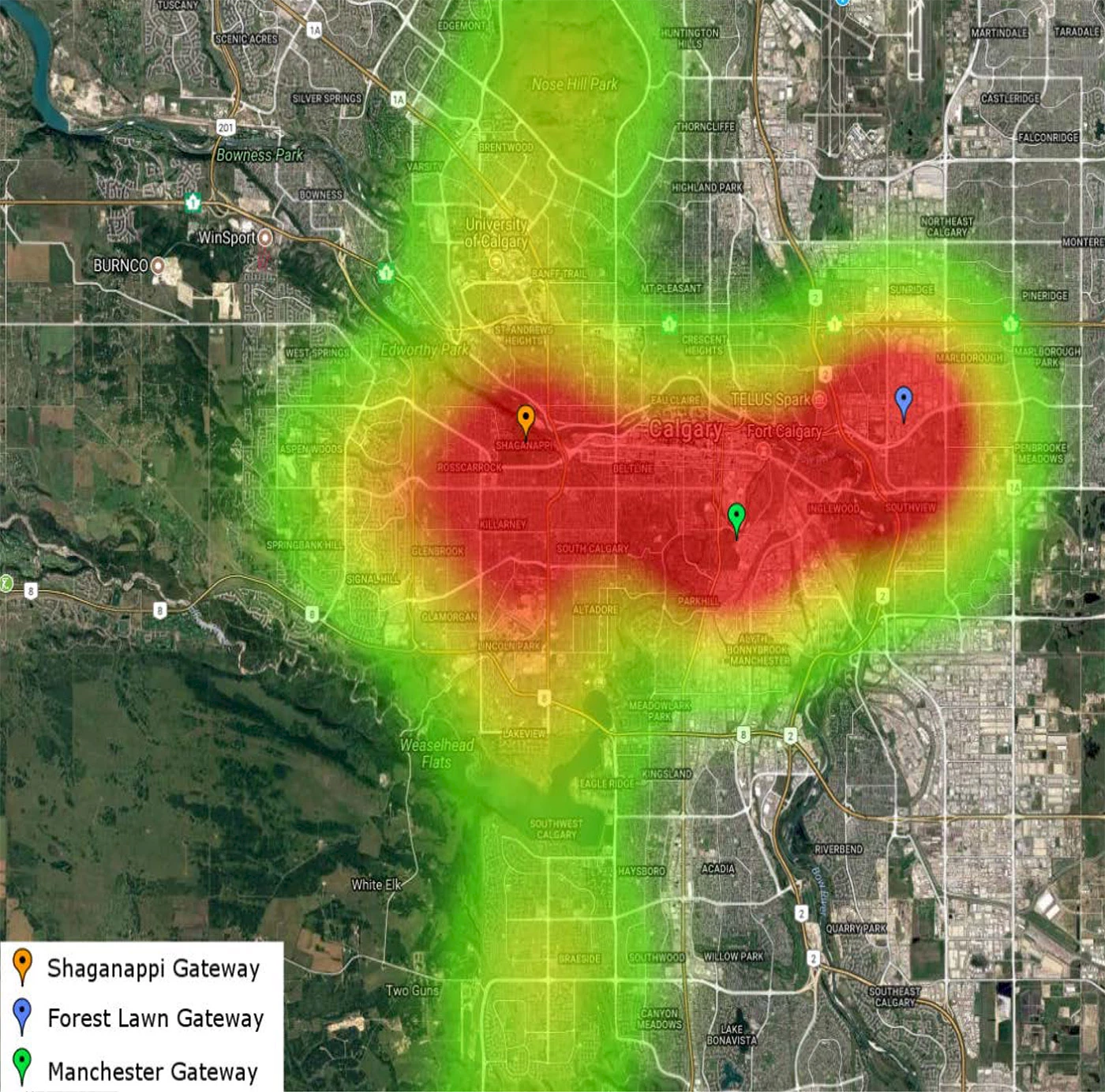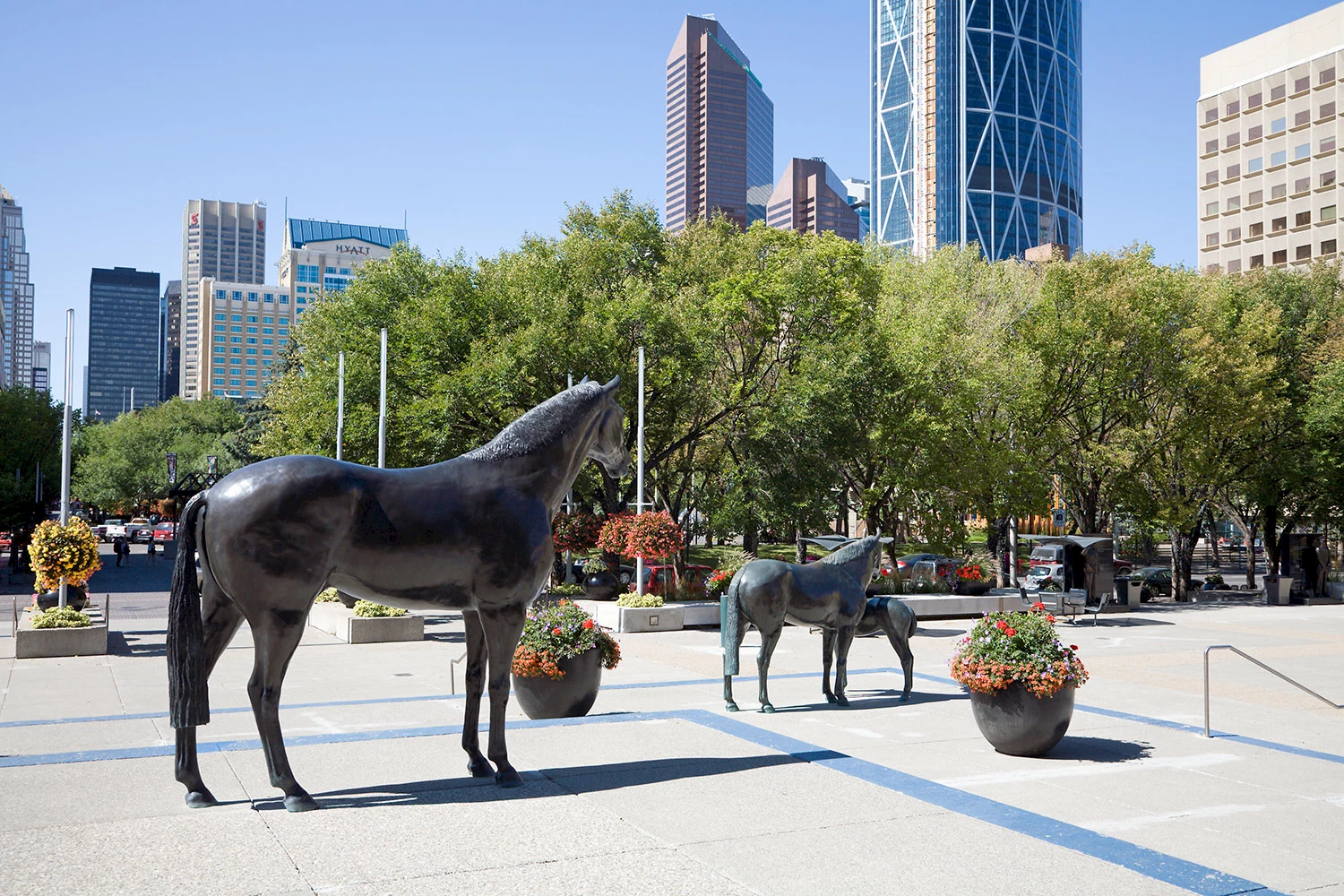Smart Cities and LoRaWAN: the Calgary story

All Smart City strategies have one thing in common: a nervous system of connected objects that gather and transmit data. These objects may do any number of things – monitor pollution levels, check water levels, measure noise levels, optimize garbage collection activities, support the smooth running of equipment, etc. But to communicate, these objects need a low-power network: the backbone of the Smart City. When the City of Calgary decided to build its own long-range, low-power network, it chose LoRa technology.
LPWAN networks (Low-Power Wide-Area Network) are the perfect choice for wide geographical coverage and because they are very energy-efficient, they can run on battery-powered sensors with batteries that only need to be replaced every two to five years. One of their many advantages is that they minimize maintenance and allow the implementation of new applications. Of course, compared to other, more power-hungry technologies such as cellular phone networks, their speed over an LPWAN is low, but most M2M/IoT applications don’t need any more. By using frequency bands under one gigahertz, LPWAN gateways can be strategically positioned to cover a large area of dozens of kilometres over open ground.
Calgary has a vision: to become a model Smart City. The Alberta’s largest city had two choices for its long-range network: either outsource the service to a private operator, or build its own network. The City decided that though the start-up costs were significantly higher, a proprietary network would be cheaper over the long run while providing greater control and better security. After all, once a network is built, maintenance costs are quite low if managed competently.
Next, the City chose LoRaWAN, a low-power, wide-area network standard developed by the LoRa Alliance, a not-for-profit organization that guarantees the interoperability of all LoRaWAN products. This open standard is already widely-used throughout the world, offering a rich ecosystem of service and equipment providers. Besides, it’s the most secure commercial standard, with 128AES multi-layer encryption for data exchange between sensors and servers.
LoRaWAN network architecture is deployed in a star-of-stars topology in which gateways relay messages between end-devices and a central network server. The gateways are connected to the network server via standard IP connections (on secure Ethernet, 3G or Wi-Fi systems), simply converting RF packets to IP packets and vice versa. LoRaWAN rates range from 0.3 kbps to 50 kbps. Data rates are variable: to maximize both battery life of the end-devices and overall network capacity, the LoRaWAN network server manages the rate setting and RF output power for each end-device individually by means of an Adaptive Data Rate (ADR) scheme.
In 2016, Calgary banked on a collaborative project to build its LoRaWAN network, involving researchers and students from the University of Calgary, as well as local IoT developers. Completed in September 2017, the network provides vast coverage, from the downtown core to the far reaches of Greater Calgary. Thanks to the City’s steady investment in communications infrastructure since 2000 (especially its fibre-optic network), Calgary was able to build its LoRaWAN network at minimal additional cost.

Calgary LoRaWAN Network. © University of Calgary.
A team of researchers at the University of Calgary’s Computer Science Department was called on to design the network’s topology. Using measurement tools the team had developed based on Arduino boards (UNO, M0 Pro, with RFM95W modules), it was able to test various scenarios in the field and determine that just three gateways mounted on radio towers could cover a dense urban area over a 15 km radius. The gateways use the ISM 915 MHz bandwidth and can support 64,125 kHz uplink channels. The team also ascertained that though speeds of up to 5.5 kb/s could theoretically be reached on a single 125 kHz channel at the physical layer, actual speeds at an application level were far lower, at less than 1 kb/s, due to the network protocols overhead.
⇨ Asif M. Yousuf, Edward M. Rochester, Behnam Ousat and Majid Ghaderi, “Throughput, Coverage and Scalability of LoRa LPWAN for Internet of Things (PDF),” in Proc. IEEE/ACM International Symposium on Quality of Service (IWQoS), Banff, Canada, June 2018.

Calgary. © iStock.
This is the first time a large-scale LoRaWAN network has been developed by a city in Canada. Since its implementation, Calgary has been able to launch innovative IoT projects involving various city operations. For example, it plans to use its new network to monitor soil conditions and manage watering, to monitor air quality in real-time, to install water level sensors to better anticipate potential flooding of the Bow and Elbow rivers, etc.
The rapid pace of change in the world poses new challenges in terms of cities’ ability to adapt. The increasing population and density of cities in general, but especially of Calgary, which has experienced sustained growth, has had an impact on housing, food security, transportation, education and health. The City, supported by local technology companies and universities, has turned to new technologies to find answers to the challenges of this century. It has discreetly emerged as a leading Smart City in Canada, nurturing a first-rate technological ecosystem that more than 1,300 software development companies call home.
Want to learn more?
Semtech, a major LoRa radio chip manufacturer, lists several interesting examples of LoRaWAN supporting Smart Cities. Check out their web site here.
